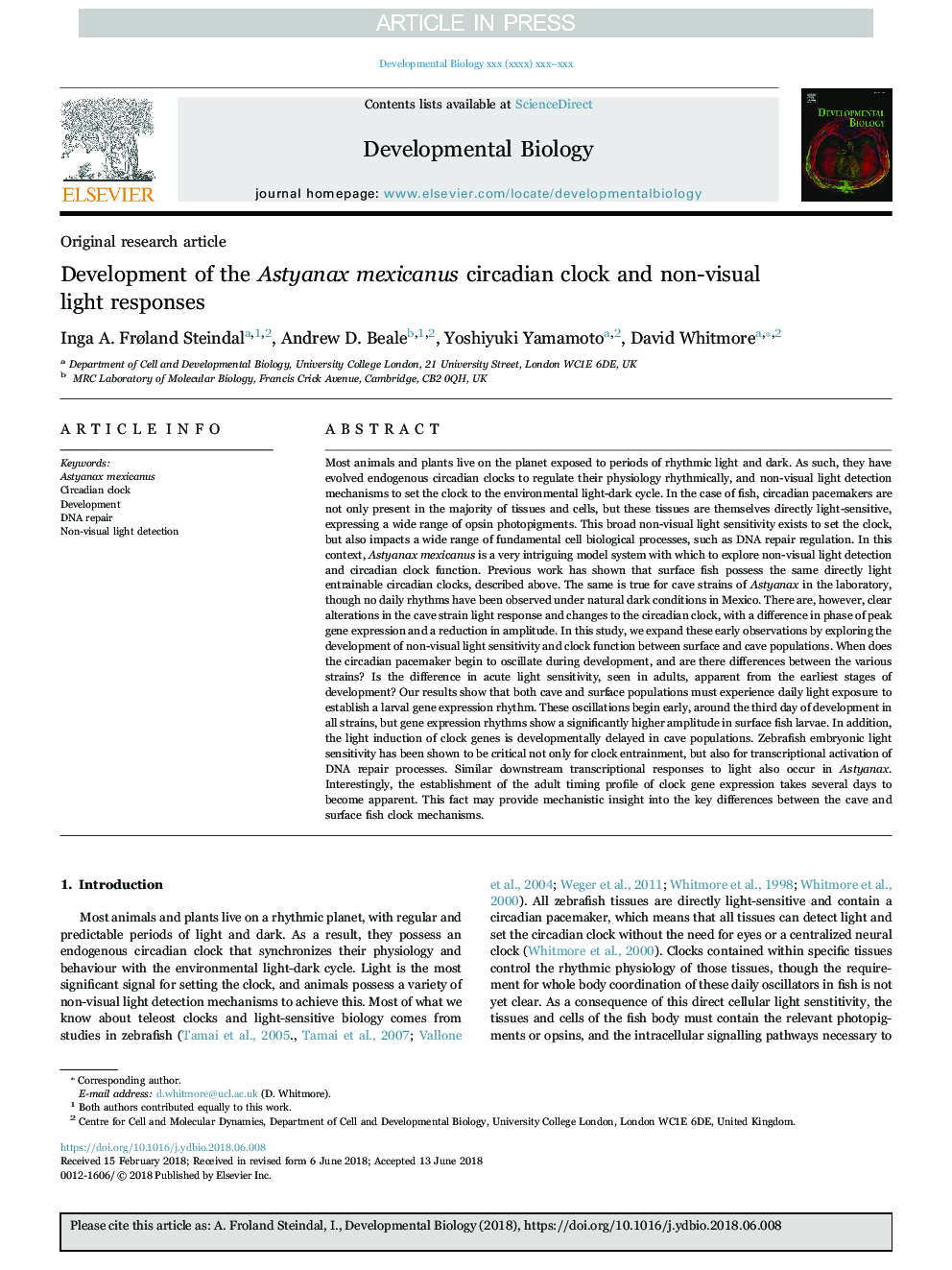| کد مقاله | کد نشریه | سال انتشار | مقاله انگلیسی | نسخه تمام متن |
|---|---|---|---|---|
| 8956291 | 1646143 | 2018 | 10 صفحه PDF | دانلود رایگان |
عنوان انگلیسی مقاله ISI
Development of the Astyanax mexicanus circadian clock and non-visual light responses
ترجمه فارسی عنوان
توسعه ساعتهای آدیاناکس مکزیکنس ساعت دیجیتال و پاسخهای نور غیر منظم
دانلود مقاله + سفارش ترجمه
دانلود مقاله ISI انگلیسی
رایگان برای ایرانیان
موضوعات مرتبط
علوم زیستی و بیوفناوری
بیوشیمی، ژنتیک و زیست شناسی مولکولی
بیولوژی سلول
چکیده انگلیسی
Most animals and plants live on the planet exposed to periods of rhythmic light and dark. As such, they have evolved endogenous circadian clocks to regulate their physiology rhythmically, and non-visual light detection mechanisms to set the clock to the environmental light-dark cycle. In the case of fish, circadian pacemakers are not only present in the majority of tissues and cells, but these tissues are themselves directly light-sensitive, expressing a wide range of opsin photopigments. This broad non-visual light sensitivity exists to set the clock, but also impacts a wide range of fundamental cell biological processes, such as DNA repair regulation. In this context, Astyanax mexicanus is a very intriguing model system with which to explore non-visual light detection and circadian clock function. Previous work has shown that surface fish possess the same directly light entrainable circadian clocks, described above. The same is true for cave strains of Astyanax in the laboratory, though no daily rhythms have been observed under natural dark conditions in Mexico. There are, however, clear alterations in the cave strain light response and changes to the circadian clock, with a difference in phase of peak gene expression and a reduction in amplitude. In this study, we expand these early observations by exploring the development of non-visual light sensitivity and clock function between surface and cave populations. When does the circadian pacemaker begin to oscillate during development, and are there differences between the various strains? Is the difference in acute light sensitivity, seen in adults, apparent from the earliest stages of development? Our results show that both cave and surface populations must experience daily light exposure to establish a larval gene expression rhythm. These oscillations begin early, around the third day of development in all strains, but gene expression rhythms show a significantly higher amplitude in surface fish larvae. In addition, the light induction of clock genes is developmentally delayed in cave populations. Zebrafish embryonic light sensitivity has been shown to be critical not only for clock entrainment, but also for transcriptional activation of DNA repair processes. Similar downstream transcriptional responses to light also occur in Astyanax. Interestingly, the establishment of the adult timing profile of clock gene expression takes several days to become apparent. This fact may provide mechanistic insight into the key differences between the cave and surface fish clock mechanisms.
ناشر
Database: Elsevier - ScienceDirect (ساینس دایرکت)
Journal: Developmental Biology - Volume 441, Issue 2, 15 September 2018, Pages 345-354
Journal: Developmental Biology - Volume 441, Issue 2, 15 September 2018, Pages 345-354
نویسندگان
Inga A. Frøland Steindal, Andrew D. Beale, Yoshiyuki Yamamoto, David Whitmore,
